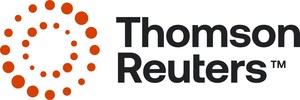Thomson Reuters Reveals New Strategies for Navigating Big Data in the Pharmaceutical Industry
- Whitepaper gives insight into technologies that convert Big Data into meaningful Little Data
PHILADELPHIA, Sept. 19, 2013 /PRNewswire/ --The IP & Science business of Thomson Reuters, the world's leading provider of intelligent information for businesses and professionals, today released Big Data and the Needs of the Pharma Industry, a whitepaper offering new strategies for managing Big Data, most specifically by using an array of technologies to convert it into more meaningful, accessible Little Data. The paper highlights how the inherently data-driven pharmaceutical industry requires deep, broad information to feed drug R&D, but the way it processes Big Data is unique.
"The Big Data opportunity in pharma means linking a variety of content across silos," said Tim Miller, vice president of Thomson Reuters Life Sciences. "Thomson Reuters is focused on making that content work at a human level, we use ontologies and analytics to turn Big Data into actionable Little Data."
The whitepaper addresses the concept that innovation in information processing involves creating environments where data has a relevant and accessible flow. It requires the ability to break down the walls between internal, external, public and commercial content and give customers the tools they need to work across them. Solutions from Thomson Reuters, Accelrys, DataSift, Entagen, and GenoSpace shed light on the burgeoning business of converting Big Data into actionable Little Data.
Thomson Reuters Life Sciences analysts and experts explore the evolution of Big Data in pharma and the industry's current needs. The findings are based on a recent Thomson Reuters survey conducted with a group of pharmaceutical IT experts to determine the challenges and opportunities Big Data presents. Respondents overwhelmingly agreed that drug discovery and market understanding were the two greatest opportunities for the industry. They also agreed that the biggest challenge of Big Data is its manageability and how to connect data from various internal and external places to feed the innovation process.
The whitepaper also includes perspectives of industry leaders who outline new problems and opportunities. They discuss how the use of Thomson Reuters ontologies can effectively convert vast amounts of data into smaller, meaningful content. For example, one organization with which the authors collaborated was DataSift, to analyze the use of social media for drug information sharing, enabling companies to find unmet needs, new adverse events and patient reaction information.
The increased focus on personalized medicine has presented its own obstacles regarding Big Data, as the amount of genomic information increases, along with the storage, management and security of the associated content. In the whitepaper, John Quackenbush, CEO of GenoSpace, an information architecture company focused on genomic medicine, discusses issues of concern in precision medicine and how the transformation of Big Data to Little Data plays a pivotal role in addressing them.
Read the whitepaper: Big Data and the Needs of the Pharma Industry.
Follow Cortellis (@Cortellis) on Twitter for the latest news in drug discovery, development, regulatory, commercialization, forecast and generics intelligence.
Thomson Reuters
Thomson Reuters is the world's leading source of intelligent information for businesses and professionals. We combine industry expertise with innovative technology to deliver critical information to leading decision makers in the financial and risk, legal, tax and accounting, intellectual property and science and media markets, powered by the world's most trusted news organization. With headquarters in New York and major operations in London and Eagan, Minn., Thomson Reuters employs approximately 60,000 people and operates in over 100 countries. Thomson Reuters shares are listed on the Toronto and New York Stock Exchanges. For more information, go to www.thomsonreuters.com.





Share this article